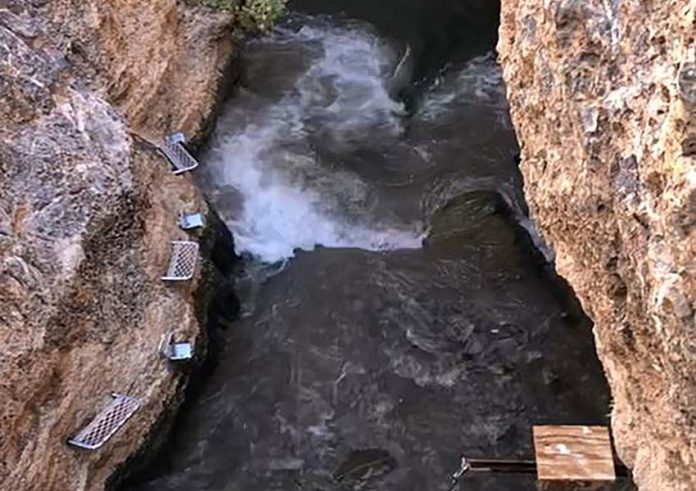The powerful earthquake that rocked central Mexico on September 19 caused a phenomenon dubbed a “desert tsunami” almost 3,000 kilometers north of the epicenter in the U.S. state of Nevada.
The 7.7 magnitude quake triggered a seiche – a standing wave in an enclosed or partially enclosed body of water – in a pool of water in a Death Valley National Park cave.
Water in an Amargosa Valley pool of water known as Devils Hole started sloshing around the cave about five minutes after the temblor occurred.
“In a surprising quirk of geology, Monday’s … earthquake in Mexico triggered four-foot-tall waves in Devils Hole,” the United States National Park Service (NPS) said in a statement.
“… Monday’s waves, technically known as a seiche, stirred the sediment and rocks on the shallow shelf, also removing much of the algae growth. In the short term, this reduces food available to the pupfish.”
Ambre Chaudoin, a biological science technician, was at Devils Hole when the “desert tsunami” occurred and filmed the phenomenon, which lasted about 30 minutes. “This is a big earthquake, wherever it is,” she said as she filmed.
The NPS says on its website that Devils Holes is “an unusual indicator of seismic activity around the world.”
“Large earthquakes as far away as Japan, Indonesia and Chile have caused the water to ‘slosh’ in Devils Hole like water in a bathtub. Waves may splash as high as two meters up the walls,” it adds.
Apart from the September 19 seiche, the most recent Devils Hole “desert tsunami” occurred in July 2019 when a 7.1. magnitude earthquake struck near Ridgecrest, California.
With reports from The Los Angeles Times and Science Alert
